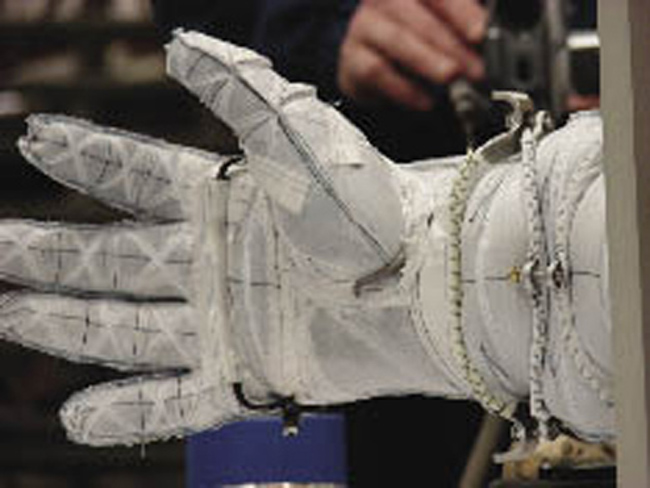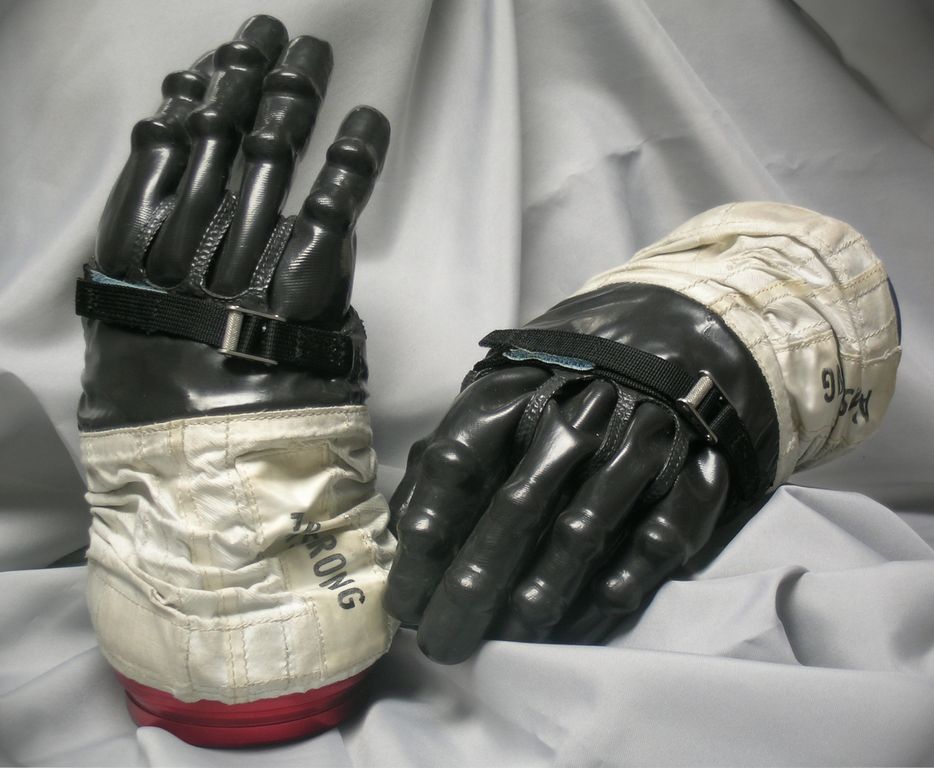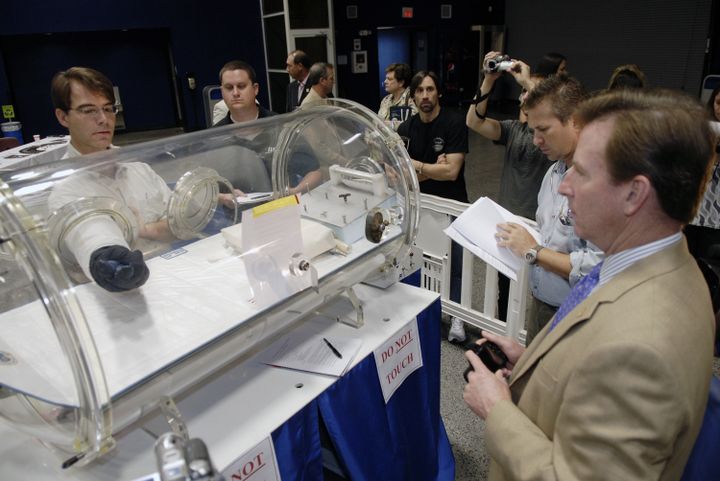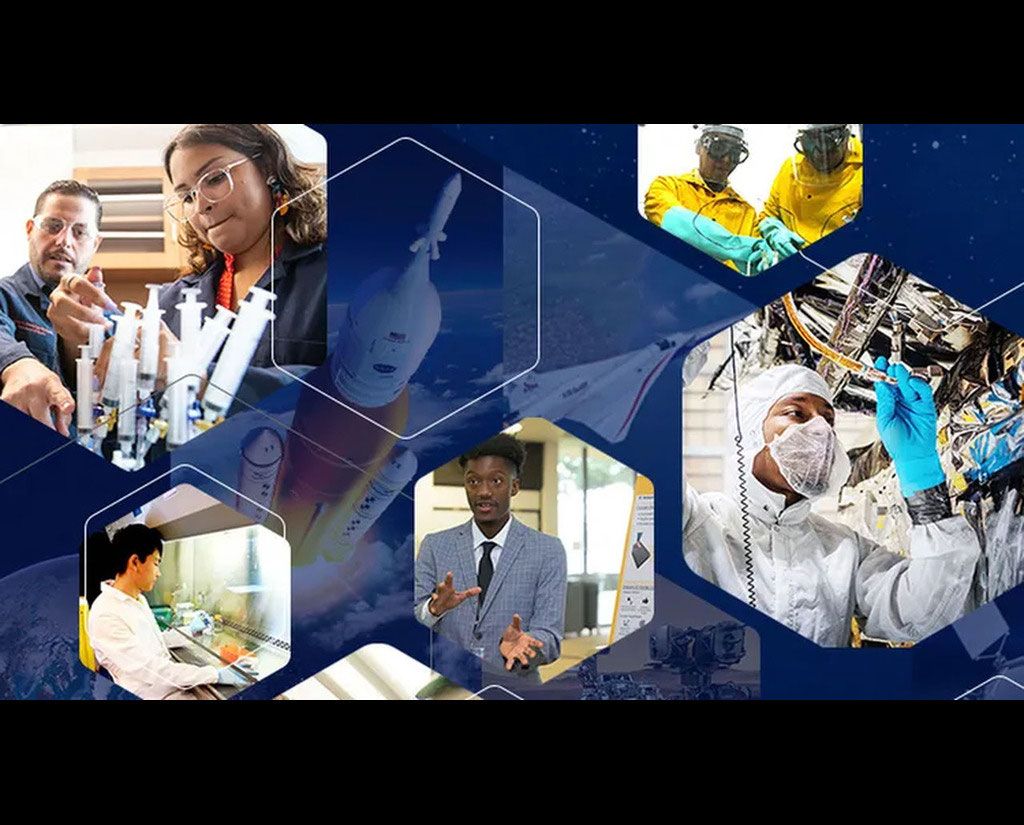
If you've ever worn a pair of hockey gloves, you have a sense of how difficult it is for an astronaut to work in space. Imagine trying to do a delicate task such as install a screw, or move around an ammonia tank, using a bulky pair of devices that resist every move. Devices that must be pressurized to stop you from dying in the vacuum of space. It's a daunting challenge.
NASA's now been in the space business for more than 50 years, and in that time it has worked to improve the design of astronaut gloves. Each generation is lighter, more flexible, better able to help astronauts do their work doing spacewalks. And part of that heritage actually comes from people outside of NASA. That's because the agency ran an Astronaut Glove Challenge between 2007 and 2009 to encourage inventors to give it their best shot.
"The Astronaut Glove Challenge sought improvements to glove design that would reduce the effort needed to perform tasks in space and improve the durability of the glove," NASA wrote on its webpage for the challenge. "In this challenge, competitors demonstrate their glove design by performing a range of tasks with the glove in an evacuated chamber. The gloves are also tested to ensure that they do not leak."
Above you can see a chat with Peter Homer, the winner of the challenge. He won a $200,000 first prize in 2007 and another first prize of $250,000 in 2009 that Homer assumedly used as seed money to start his own company, called Flagsuit LLC, to create astronaut gloves. The first phase was just the pressure-holding portion of the glove alone, but in the second phase NASA demanded an entire glove. While Homer and 2009 runner-up Ted Southern were tied in many categories, it was Homer's emphasis on flexibility and pressurization that gave him the prize for a second time.
"In the burst test, each glove had to withstand an internal pressure of at least 16 psi," NASA wrote. "Ted Southern’s glove reached 17 psi before beginning to leak. Peter Homer’s glove reached the maximum pressure that could be provided, at 20 psi."
Homer also wanted to show his children that anything was possible, so he invited them to work alongside him as he entered both challenges. In 2009, his children were 15, 11 and 6; his oldest son, Matthew, took photos and video of the proceedings and even came with his dad to the competition. "One of the things I wanted to show them is that if you set your mind to something, you can do just about anything," Homer said in another statement.

Close-up of the winning glove design. Credit: NASA
NASA also had a $50,000 incentive prize available in 2009 if any of the gloves demonstrated had an innovative design, but the agency determined that the designs -- while interesting and using some "novel materials and construction techniques" -- were not quite enough to garner the extra funds. Still, NASA hailed the glove challenge as a highly successful example of its Centenntial Challenge program, which began in 2005 to solve problems facing NASA in space exploration and related aspects.
The accolades didn't stop there for Flagsuit. On the heels of winning the astronaut challenge, the company won the 2009 NewSpace Business Plan Competition (run by the Space Frontier Foundation) and received a further $5,000 as well as other prizes, including opportunities to present at the Space Investment Summit and Space Angels Network event.
And NASA took notice of Homer's design even after the competition was finished. In 2011, the agency awarded his company a sole-source contract to make improved gloves for astronaut spacesuits. At the time, Homer acknowledged it was a huge opportunity for him to compete in the NASA challenges, but said he relished the new contract even more.

Gloves used by Neil Armstrong, the first man on the moon, inside the vehicle. Credit: NASA
"This is a huge opportunity," Homer said in a statement, adding that the new work "will allow us to showcase the more advanced glove features we’ve been developing on our own." One of those was a flexible joint technology that at the time, was pending a patent. As of this writing, Homer's LinkedIn lists 11 patents that he holds as a part of Flagsuit LLC, which is listed as still active today after nearly eight years of operations.
Homer is a regular backer of crowdfunding projects these days, demonstrating his affinity for challenges in general. This was something he spoke to NASA about after he won his two prizes. "Prize competitions are extremely important because of the value delivered at a relatively low cost," he said in 2013. "In addition to a multiplier effect of many teams competing for one prize, there is the factor that nothing is paid until the challenge is met. Having a prize incentive keeps development teams going through the hard parts and keeps them focused on the true objective."
NASA, Homer added, occasionally brings in subcontractors when projects come up. And the future may be bright indeed for Homer's venture given the number of private companies expressing an interest in space exploration. Virgin Galactic and XCOR are both talking about bringing tourists into suborbital space, while Mars One wants to bring astronauts all the way to the Red Planet.
Even the older agencies are rethinking their approach to space exploration; NASA, for example, is trying to align its space program to bring its astronauts to Mars in the 2030s. Will the gloves these ventures use be similar to Homer's? It will be interesting to see.
Top image: Peter Homer of Southwest Harbor, Maine (left) demonstrates his winning glove design to NASA representatives. Credit: NASA








